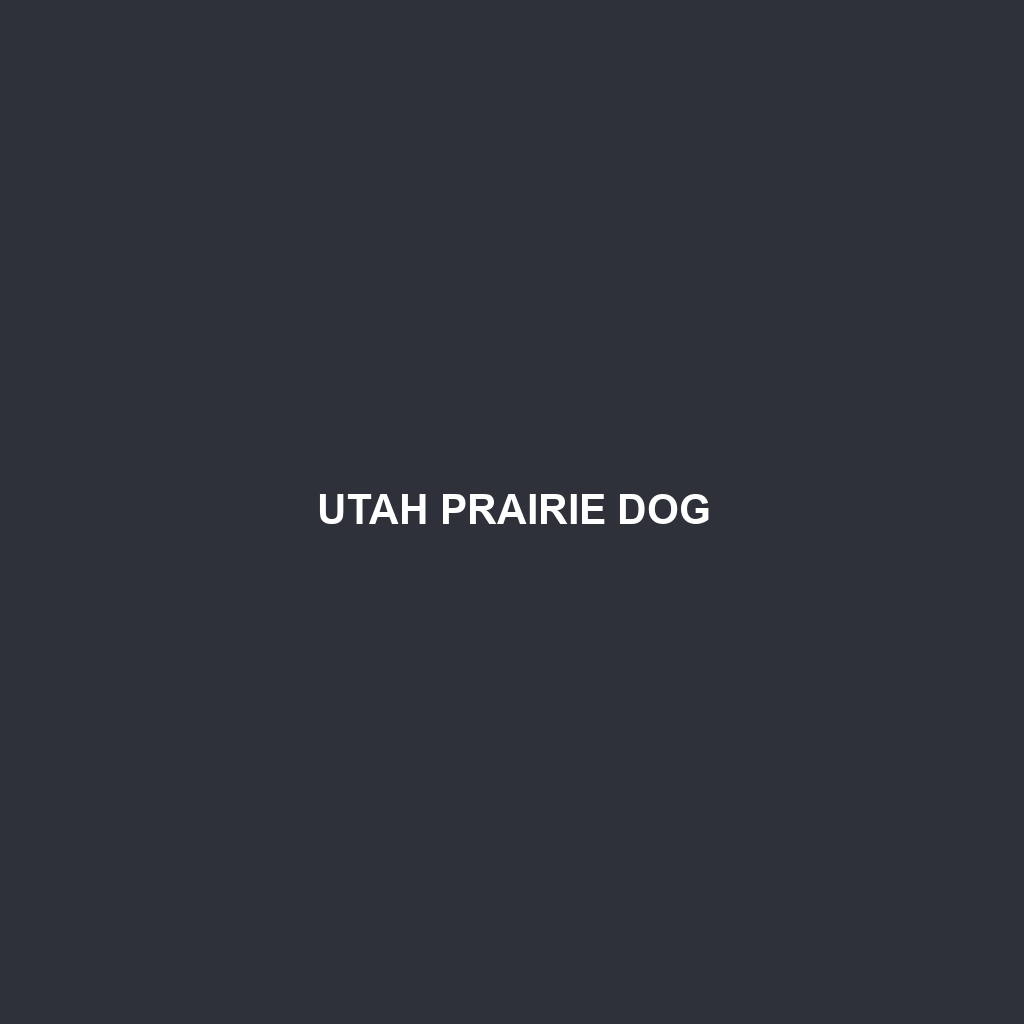Utah Prairie Dog Species Description
Common Name: Utah Prairie Dog
Scientific Name: Cynomys parvidens
Habitat
The Utah Prairie Dog is primarily found in the mountain valleys of Utah, particularly in the Great Basin region. Its natural habitat includes grasslands, sagebrush areas, and open plains, which provide suitable conditions for burrowing and foraging. The species is concentrated in areas such as Salt Lake Valley, Wasatch Front, and parts of the West Desert.
Physical Characteristics
Utah Prairie Dogs are small mammals that typically weigh between 1.5 to 3.5 kg. They have a robust, cylindrical body with a short tail and can measure approximately 30 to 40 cm in length. Their fur is predominantly brownish-tan with a lighter underbelly, and they are characterized by rounded ears and short limbs. Distinctive features include their prominent front teeth and a bushy tail that stands erect, enhancing their communication signals.
Behavior
Utah Prairie Dogs are social animals, living in large colonies known as towns. They are diurnal, exhibiting activity during the day, primarily during mating season and foraging. These rodents utilize a complex system of burrows that can be extensive, serving as a refuge and nursery. Their vocalizations include various calls to alert each other to predation threats, which facilitates their communal living.
Diet
The Utah Prairie Dog primarily feeds on grasses, seeds, and roots, favoring herbaceous plants native to their habitat. Their diet is especially rich in nutrients during the growing season, and they play a critical role in managing vegetation in their ecosystem. Food preferences may shift with seasonal growth patterns, which influences their foraging behavior.
Reproduction
Breeding occurs in the spring, typically from March to April. After a gestation period of approximately 30 days, female Utah Prairie Dogs give birth to a litter of 2 to 8 pups. These pups emerge from the burrow after around six weeks and begin to forage with their mothers. Parental care lasts several months, during which the young learn vital survival skills.
Conservation Status
The Utah Prairie Dog is currently listed as threatened under the Endangered Species Act. Habitat loss due to urban development and agricultural expansion, along with disease outbreaks such as plague, have contributed to population declines. Conservation efforts focus on habitat restoration and protection initiatives to ensure the survival of this species.
Interesting Facts
Utah Prairie Dogs are known for their elaborate burrowing systems, which can cover as much as 100 acres. These burrows not only serve as homes for the prairie dogs but also provide habitats for other animals, highlighting their role as a keystone species in the ecosystem. They are also notable for their aggressive social structures, where dominant males govern the colony dynamics.
Role in Ecosystem
As a keystone species, the Utah Prairie Dog plays a crucial role in its ecosystem by promoting biodiversity. Their grazing habits help control plant growth, creating a balanced habitat for other species. Furthermore, their burrows provide shelter for various organisms, including burrowing owls and badgers, making their presence vital for ecosystem health.
